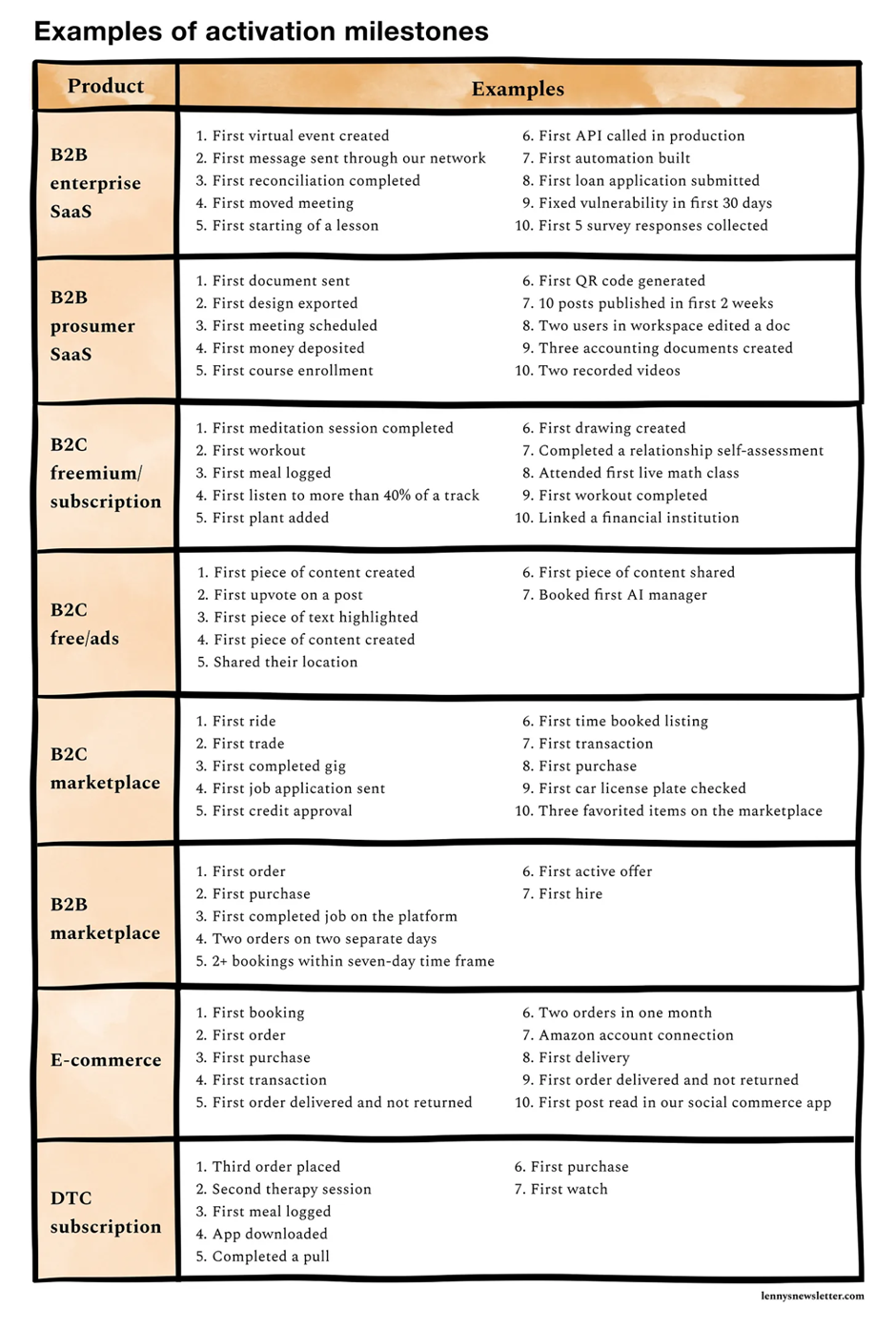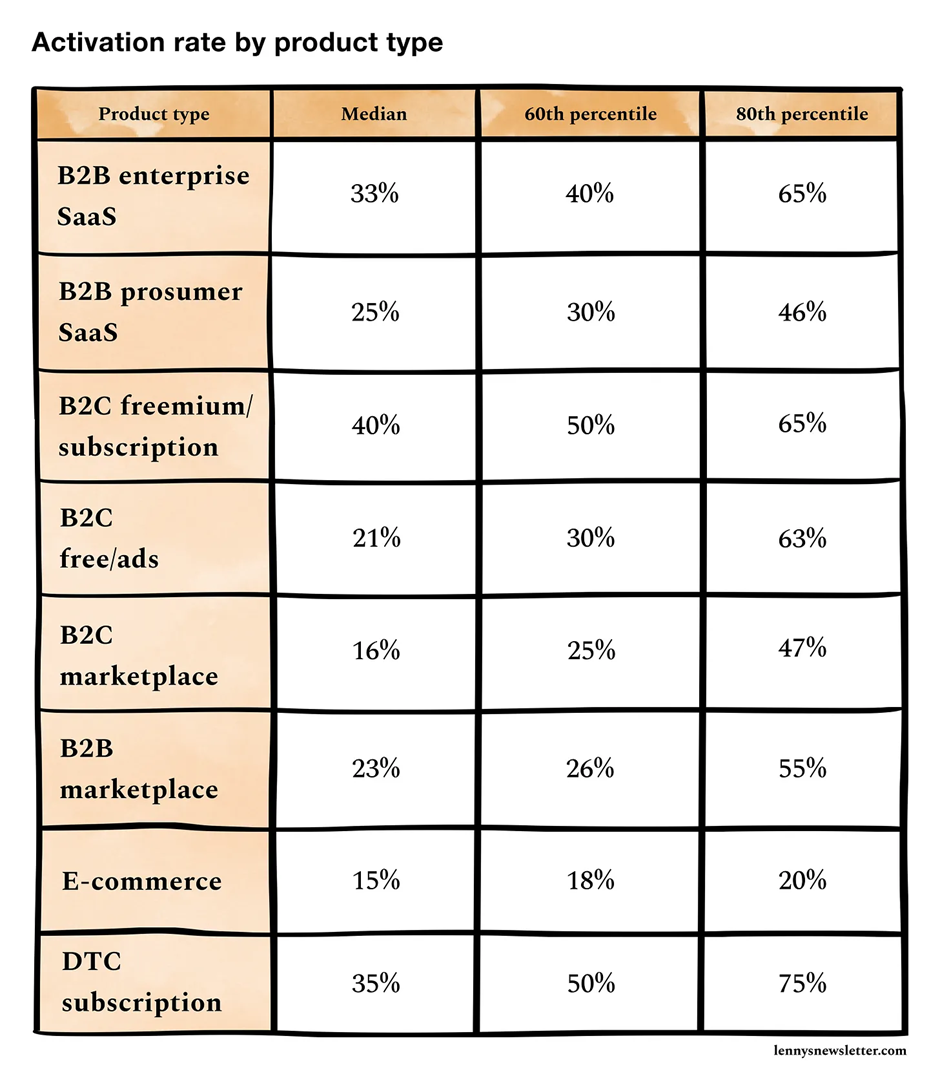As a startup, you’re constantly looking for ways to improve your business and measure your progress.
One metric you should be tracking is activation rates- that is, the percentage of people who take action after signing up for your product or service.
If you aren’t monitoring this metric, you could miss out on valuable insights into your business performance.
In this blog post, we’ll discuss why startups need to track activation rates and how to do so. We’ll also share some tips for improving your activation rates. So read on to learn more!
What Is An Activation Rate?
Business metrics are the foundation of any startup business. They provide critical insights into daily active users, customer acquisition cost, and overall business growth. However, tracking these metrics can be difficult for startups, who often lack the resources and data to do so effectively.
A great onboarding process is a key to a product’s success. It’s the first step in ensuring customer retention and engagement. To assess the onboarding process, User Activation Metrics are key performance indicators. These metrics help determine whether users are actually using the product and if they’re finding value in it.
An activation rate is a key financial metrics that measures how many users or customers take the desired action. For example, if a company wants to measure its customer acquisition rate, it would track the number of new users who sign up for its service.
Activation rates can also be used to compare different products or services. For example, a company may want to see how its new product compares to its old product in customer acquisition. By tracking activated users, companies can learn valuable insights about their customers and business.
Why Is It Important For Startups To Track This Metric?
The activation rate can be helpful for companies to track because it helps them gauge whether their marketing and product strategies are working. If the activation rate is low, it may indicate that the company needs to change its approach. For example, if you’re running a campaign to promote a new product, your activation rate would be the percentage of paying customers who purchase the product.
Activation metrics help startups track and understand how their customers use their products or services. This information can then improve the customer experience, drive growth, and increase the number of monthly active users. In today’s competitive startup landscape, startups need to track their activation metrics to stay ahead of the curve.
How Can You Calculate Your Activation Rate?
[No. users who complete the set milestone / Total no. users who signed up] × 100 = Activation rate (%)
Calculating your activation rate is actually pretty simple – all you need is a few basic pieces of information. First, you’ll need to know how many people saw your ad or message (known as your impressions).
Product and website analytics tools like Mixpanel and Google Analytics offer easy ways to monitor how many people are completing your set milestone.
Next, you’ll need to track how many people took the desired action (this is known as your conversions). Finally, you must divide your conversions by impressions and multiply by 100 to get your activation rate. For example, if 100 people saw your ad and 10 purchased the product, your activation rate would be 10%.
While calculating your activation rate can help understand the effectiveness of your marketing campaigns, it’s important to remember that it’s just one key metric – don’t get too caught up in chasing numbers. Instead, focus on creating quality campaigns that deliver real results for your business.
Examples of User Activation Metrics
Your user activation rate (UAR) is a key metric that reveals your product-led growth strategy’s success. Simply put, it measures user behavior, for example, the percentage of users who sign up for your product and then go on to use it actively.
By a recent benchmarking survey by Openviewpartners, the average activation rates for the top PLG companies range between 20% and 40%. If you do not see similar numbers in your business, there’s room to improve!
Several ways to improve your UAR include simplifying your sign-up process, providing personalized onboarding, using recurring revenue MRR or offering incentives for early adoption. By focusing on this key metric, you can ensure that your product-led growth strategy is successful.
Lenny Rachitsky undertook a survey into activation rates. They looked at activation rates by eight product types:
- B2B enterprise SaaS (e.g. Salesforce, Workday)
- B2B prosumer SaaS (e.g. Figma, Slack)
- B2C freemium/subscription (e.g. Duolingo, Calm)
- B2C free/ads (e.g. Snap, Instagram)
- B2C marketplace (e.g. Airbnb, eBay)
- B2B marketplace (e.g. Faire)
- E-commerce (e.g. Chewy, Wish)
- DTC subscription (e.g. Hims, Athletic Greens)
Here are some of the most common activation milestones, categorized by product type from the survey.

What is a good activation rate?
In Lenny’s survey he looked into what a good activation rate was. His results are as follows:
Based on his survey results, the average activation rate is 34%, and the median activation rate is 25%.
For just SaaS products (removing marketplaces, e-commerce, and DTC), the average activation rate is 36%, and the median is 30%.
Here’s what he found activation rates look like by individual product types:

5 Strategies To increase Activation Rate For Startup Metrics
As a startup founder, it’s essential to have key metrics that you focus on to ensure the success of your business. However, it can be difficult to know which metrics are most important and how to increase the activation rate for these metrics. Here are five strategies that can help:
1. Know Your Customer Inside Out
Really understanding who your target customer is will help you know what kind of messaging and offers will resonate with them. This will help increase your metrics’ activation rates and improve your monthly recurring revenue.
2. Keep It Simple
Don’t try to track too many different things at once. Stick to key metrics and ensure that your team is focused on these. Trying to track too many things can lead to confusion and lower activation rates.
3. Set SMART Goals
Ensure your goals are specific, measurable, achievable, relevant, and time-bound. This will help you create a plan for achieving these goals and increasing activation rates.
4. Test & Iterate
Try different things and see what works best for your business. Then, keep doing more of what works and less of what doesn’t. This will help you optimize your strategies for maximum impact.
5. Use Data To Drive Decision Making
Collect data on your customers and their behavior. Use this data to inform your decisions on offers and how to increase activation rates. Using data, you can make decisions backed by evidence instead of guesswork.
Following these strategies will help you increase the activation rate for your startup metrics, giving you a better chance of success.
Tips For Tracking Your Startup’s Activation Rate
If you’re like most startup founders, you’re always looking for ways to improve your activation rate. After all, this metric measures how well your product or service is performing.
There are several ways to calculate this, but one of the most common is to take the number of free trial users and divide it by the number of paying customer. This will give you an idea of your average customer, how well your product or service is performing, and whether or not people are actually using it.
A high activation rate means people are using your product and finding it valuable. On the other hand, a low activation rate indicates that people are not using your product or are not using it but not finding it valuable. Either way, it’s important to keep track of your activation rate so you can make the necessary changes to improve it.
Here are a few tips for tracking your startup’s activation rate:
Identify your target market
This is the group of people who are most likely to use your product or service. When you know your target market, you can more easily track their activation rates.
Use key metrics
You can use several different metrics to track activation rates, but some key ones include customer acquisition, retention, and engagement.
Test and experiment
Try out different marketing strategies and tactics to see what works best for activating your target market. Test different messages, call-to-actions, and even pricing structures. The goal is to find what works and then do more of it.
Keep track of progress.
Keep track of your progress over time to see if your activation rate is increasing, decreasing, or staying the same. This will help you identify which changes are working and which aren’t.
Get feedback
Ask your customers for feedback on their satisfaction with your product or service. This will give you valuable insights into how well your product is performing and where there may be room for improvement.
By following these tips, you can more effectively track your startup’s activation rate and make the necessary changes to improve it for a lifetime value. A high activation rate is essential for any successful startup, so ensure you do everything possible to increase yours.
The Final Takeaway
All in all, being aware of your activation rates is key to the success of any startup. It’s a great metric to track because it can give you insights into how well your product is doing and where you need to improve. Keep an eye on this number and use it to inform your decisions – you’ll be glad you did!

